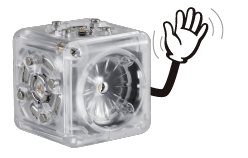If you want to be a better thinker, you might want to learn to learn like a baby.
Babies are remarkably capable constructors of connections. When we are under two years old, our brains run in overdrive to create millions and millions of synapses. By the time we turn two, we have more than twice the number of synaptic connections as our adult brains. Over time we pair down these connections as we experiment and learn from life. However, this rich network of connective links is the key to starting to learn like a baby.
By oversupplying connections between mental concepts, babies maximize their opportunities to associate concepts. Building more connections between concepts is key to being able to learn like a baby. In his book “How to Take Smart Notes“, writer and researcher Sonke Ahrens states that “the things we understand are connected, either through rules, theories, narratives, logic, mental models or explanations.” Fostering these connections will help us all learn like a baby.
Sonke goes on to quote another writer named Helmut D. Sachs who states that “the more we know, the more information we have to connect new information to, the easier we can form long-term memories.” This is where the power of your mental network comes into play and can help you learn like a baby. The richer your network, the more opportunities you have to connect new concepts and make learning last.
One great way you can practice this skill is to play an association game. In the first part of the association game, try taking new concepts, facts, or stories and connect them to things you already know about. How similar are they? What do they have in common? For part two of the association game, try the opposite. Compare the new information to things you already know but this time try to find something that is different. How does this new fact differ from the things you know? To what extent does it conflict with what you already know about this subject area?
If you play the association game as a habit, it will help you build more connections between concepts. Continuous association and comparison are a great way to learn like a baby. But there are other ways you can practice learning like a baby too. Try playing the crossword puzzle in your local newspaper, or find some online – they’re all about finding associations and connections. Plus, playing games is a great way to practice cognitive skills.
Crosswords aren’t terribly popular with growing children or young students. But we’ve seen that educational toys like Cubelets robot blocks make practicing learning like a baby and other critical thinking skills deeply engaging. It’s one of the many reasons Cubelets are used inside tens of thousands of classrooms around the world. Cubelets allow you to construct simple models of complex things. Cubelets’ abstract nature allows you to connect them to a wide variety of subject areas. They’re the perfect way to introduce a new lesson or study area using a common tool throughout the school year. Plus, they’re super engaging for nearly every type of student!
So if you want to become a better thinker, start by practicing the simple principle of learning to learn like a baby. For every new fact, you want to remember or deeply understand, play the association game. Focus on building connections to things you know, or work with a common modeling tool like Cubelets to create a center for connections between all sorts of complex systems. While we can’t go back in time to learn like a baby we can build the skills and habits that help us practice learning like a baby as adults.















